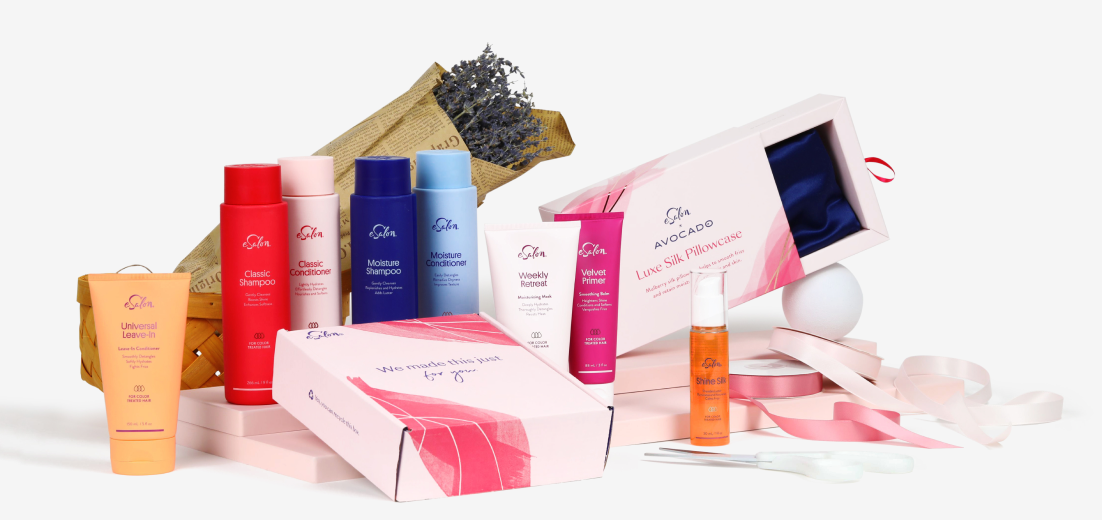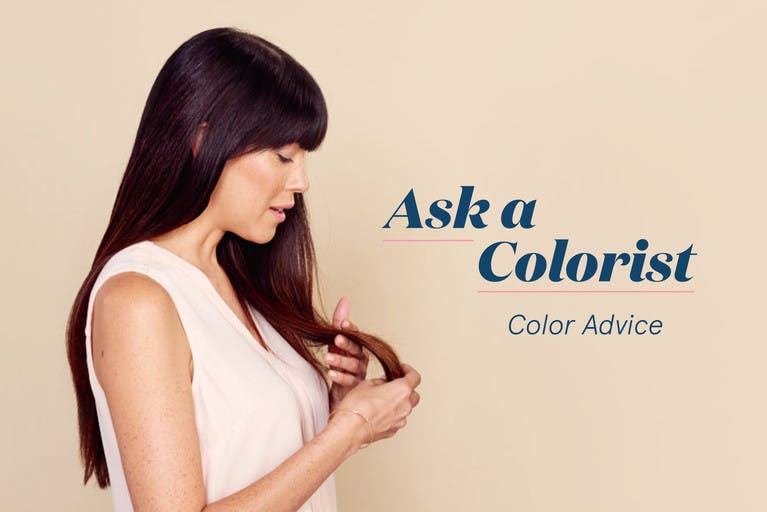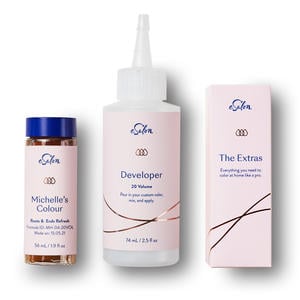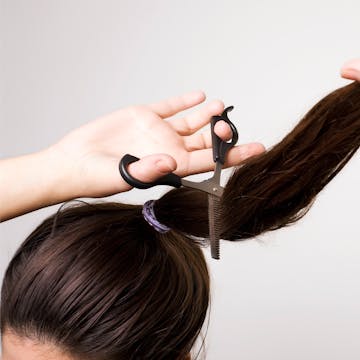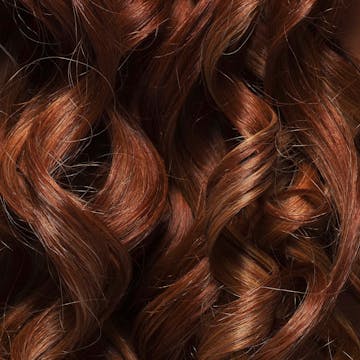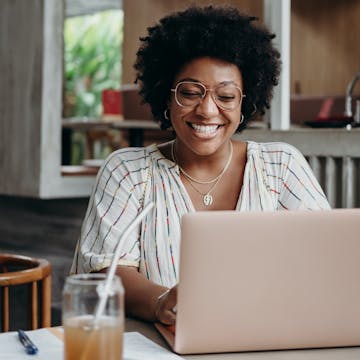Can I Lighten Hair After I’ve Already Colored It?
In this month’s Ask a Colorist feature, we’re breaking down everything you need to know about lightening hair after dying it—because lightening uncolored hair is one thing, but lightening already-colored hair is another.
Every day, we receive tons of questions about lightening colored hair—Can I do it by myself? Can I go from black to platinum blonde all at once? What’s a “lifter” anyways? We’re here to give you our expert insight into lightening hair that’s already been colored.
01 CAN I LIGHTEN ALREADY-COLORED HAIR AT HOME WITH HAIR DYE?
Generally speaking, hair dye won’t lighten previously-colored hair. Why? Because it’s not designed to! Hair dye is created to simply add color to your hair, not to lighten or remove color. Think of it this way: Once you add color to your hair, the hair molecule becomes filled up with color. To change your color, you have to let the molecule shrink over time, aka, let your color fade before you “fill it back up” with a different color. It’s like eating a big meal—when you are full, there is simply no space left. Now, if you want to lighten your previously-colored hair, there is added complexity to consider and understand.
To lighten your hair, not only do you have to wait until the hair molecules shrink, but depending on how light you’re looking to go, you may also need to “strip” away your hair's undertone. What’s an undertone? Each hair follicle is essentially made up of two layers. The first layer is your underlying pigment, which is the tone at the base of your hair. The second layer is your hair shade, for example, black, brunette, or blonde hair. Together, both layers create your “overall color.” Your undertone makes all the difference in your dye job results. More often than not, when going lighter you have to strip your undertone to brighten it up, and then add your desired shade (aka hair dye) on top!
02 WHAT’S THE BEST WAY TO LIGHTEN ALREADY-COLORED HAIR?
To achieve a lighter shade on previously-colored hair, we recommend you do one of two options. The first option is to use a strong lifter—treatments that have a volume of ingredients like ammonia, peroxide, bleach, or alternative chemicals that clear the hair molecules of color. Then after you have lifted your hair, you can apply your desired color. The upside of option one? It’s a fairly quick process, depending on how much you wish to lighten and tone. The downside? Strong lifters that significantly lighten hair are pretty invasive treatments that can cause damage and thinning, and it’s a pretty tough process to pull off at home, so we advise you get it done at a salon by a professional hairdresser. (Note that low-hydrogen-peroxide-containing lighteners can be used safely at home to highlight hair, but is not advised for getting and maintaining an overall lightened shade.)
The second option is to wait 8-10 weeks after you initially dyed your hair, to allow time for your hair color to fade and your hair dye molecules to shrink. Once your hair color has faded, you can then dye your hair at home. With that said, after allowing the time for your hair color to fade, at-home hair color typically only allows 1-2 shades lighter. If you are looking to dramatically lighten your dark hair, say, 3-5 shades, see option one (bleaching).
If you’ve chosen to go with option two, there are things you can do in the meanwhile to maintain your roots or give your hair a lightened feel. The first thing you can do is use a root coverage spray to touch up your color. This is an excellent option for people who are waiting for their color to fade but still need root coverage for grays and regrowth. You can also apply DIY highlights at home, to give your hair a sunkissed, lightened look while you’re waiting to go full throttle with an all-over lightened color.
Need help deciding which option is best for you? Email us at [email protected] or simply give one of our colorists a ring! They’re always here to help with any of your styling questions.
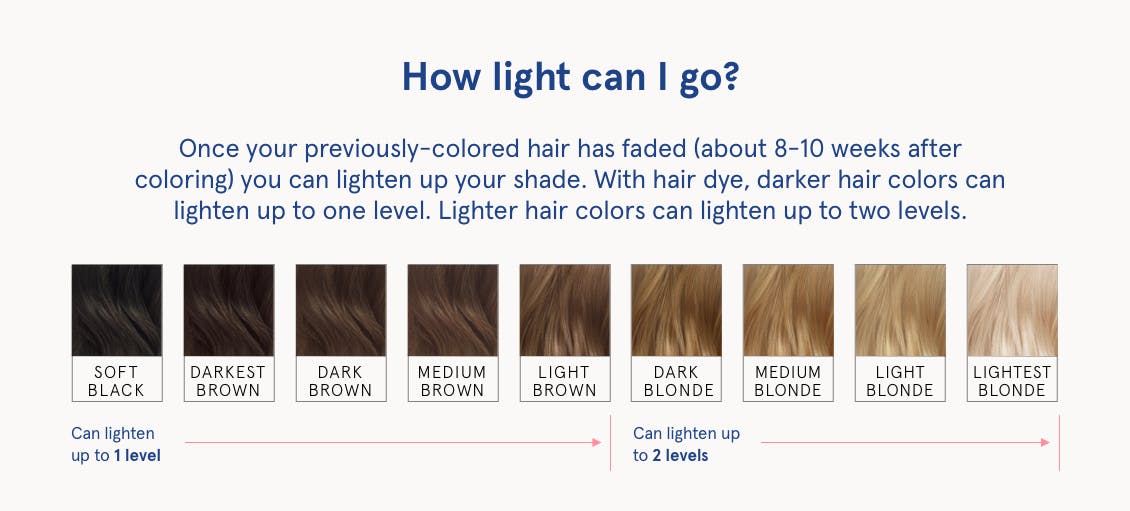
03 WHY DO YOU RECOMMEND LIGHTENING ALREADY-COLORED HAIR IN A SALON, VERSUS AT HOME?
Unless you are a professional hairstylist, lightening your hair at home for the first time can be very tricky. That’s because it involves bleaching, which can be a very invasive and involved process that can very easily cause breakage and may damage the hair shaft and hair cuticle if not done correctly. Besides causing damaged hair, you may not get the results you were hoping for when self-lightening at home with drugstore products.
As we mentioned earlier, that’s because when you bleach your hair, you are stripping your hair of all color, revealing your undertone, or what fancy colorists call your “underlying exposed pigment.” If your hair is on the darker side (like dark brown or black hair), your undertone may be a dark, warm, reddish tone. If your hair is on the lighter side (like light brown hair), it may be a pale yellow or ashy shade. Undertones aren’t very pretty on their own, so you need to add a hair color on top of it. This is another tricky part when lightening your hair at home. When applying color on top of exposed undertones, you may have trouble getting results that aren’t overly brassy or muddy. A hair care professional will have a trained eye and experience so that your results aren’t unexpected.
04 IS THERE A WAY TO LIGHTEN ALREADY-COLORED HAIR WITHOUT BLEACH?
We get it. You’re impatient, and you don’t feel like waiting for your current or natural hair color to fade. And using bleach doesn’t exactly sound like a spa day, either. We do happen to have a few recommendations that can help speed up the fading process so that you can lighten your hair sooner. First, you can use a clarifying shampoo in place of your regular shampoo to help lift the darker color from your hair. You’ll notice your color will gradually fade and lighten quicker than if you were to use a color-protective shampoo. Second, if your hair is the same color from root to tip, you can try to remove the color with Color Oops or Colourb4. These formulas will help remove the color from your hair, but aren’t as abrasive as bleach—and of course, won’t lighten your hair like bleach would. After the color has been removed, work with your colorist to pick the shade and tone you want to see in your hair.
We hope you’ve learned all the ins and outs of lightening up already-colored hair. It may seem tricky, but if you’re patient or willing to go to the hair salon, the lighter color results on your own hair will be worth it. As always, let us know if you have any questions at all. We’re the pros, and we want you to be one too.
We hope you’ve learned all the ins and outs of lightening up already-colored hair. It may seem tricky, but if you’re patient or willing to go to the hair salon, the lighter color results on your own hair will be worth it. As always, let us know if you have any questions at all. We’re the pros, and we want you to be one too.
